
Employee Appreciation Day: March 6
According to the 2018 American Community Survey, there were more than 111 million full-time, year-round workers in the U.S. and their median earnings were $48,565.
See more statistics at the U.S. Census Bureau
|
Census Maryland 2020 Newsletter
February 28, 2020
In This Issue
- Secretary McCord Attends Prince George's County Census Event
- Secretary McCord Addresses Healthcare Groups About Census
- Planning Staff at AARP Define Your Decade Press Conference
- Maryland's Census 2020 Advertising Campaign to Launch on March 12
- Census Bureau Plans to Reach Over 99% of Population
- Census Bureau Profile America Facts for Features: Women s History Month: March 2020
- Census Bureau Reaches Ambitious 2020 Census Community Partner Goal
- Census Bureau Partners With Pediatricians and Child Advocates in Effort to Count Every Child in 2020 Census
- 2020 Census Student Activities Mailed to Every School Across the Nation
- Census Training Tailored for the AAPI Community: Sunday March 1st
- Majority of U.S. Adults Incorrectly Believe 2020 Census Will Ask About Citizenship, Survey Finds
- AP-NORC Poll: Most Americans Plan to Participate in Census
- The Changing Categories the U.S. Census Has Used to Measure Race
- Who is No. 1? Whoever Gets to Fill Out 2020 Census Form
- Wanted: Half a Million Workers to Help Count People for the Census
- Community Groups Raise Awareness for 2020 U.S. Census
- A Full 2020 Census Count of Military Service Members and Families Is Important to Their Communities
- College Towns Depend on Accurate Count of Students Living in Area
- Funding for Nutrition Benefits Programs Informed by Census Statistics
- The Census Goes Digital – 3 Things to Know
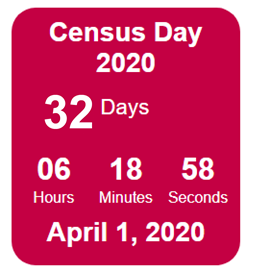 |
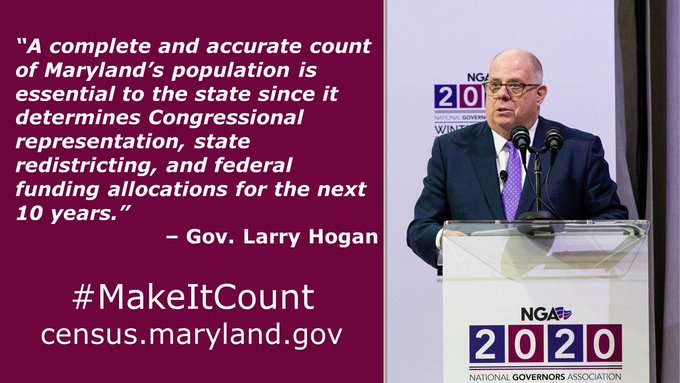
 |
|
The Maryland Department of Natural Resources is promoting Census 2020 from their website with cute character encouraging visitors to "Spring into action" to support Maryland's natural resources. |
For any questions about the Maryland Census, call (410) 767-4500 or go to Census.Maryland.gov.
Follow Maryland Census 2020 on Twitter and Facebook – Follow @MdCensus2020 and like @MdCensus2020 – to stay in touch with Maryland's Census 2020 complete count efforts. Join the conversation by using hashtag #2020MDCensus on Facebook and on Twitter.

Become a Census Taker!
Help ensure your community gets counted in the 2020 Census by joining the U.S. Census Bureau team. Visit https://2020census.gov/en/jobs and apply today.
|
Upcoming Meetings
For further details, go to the Maryland Census 2020 Events page
Census Training Tailored for the
AAPI Community |
Mar. 1 |
10:00 a.m. |
| Howard County CCC Meeting |
Mar. 3 |
9:00 a.m. |
| Maryland CCC Meeting |
Mar. 3 |
10:00 a.m. |
| Wicomico County CCC Meeting |
Mar. 9 |
3:00 p.m. |
| Carroll County CCC Meeting |
Mar. 10 |
10:00 a.m. |
| Worcester County CCC Meeting |
Mar. 10 |
10:00 a.m. |
| Baltimore County CCC Meeting |
Mar. 11 |
10:00 a.m. |
| Calvert County CCC Meeting |
Mar. 11 |
10:00 a.m. |
| Charles County CCC Meeting |
Mar. 12 |
2:00 p.m. |
| Cecil County CCC |
Mar. 16 |
6:00 p.m. |
Census 2020; Consequences for
Garrett County |
Mar. 17 |
8:00 a.m. |
| Allegany County CCC Meeting |
Mar. 17 |
3:00 p.m. |
| Prince George's County CCC Meeting |
Mar. 18 |
6:00 p.m. |
| St. Mary’s County CCC Meeting |
Mar. 19 |
11:00 a.m. |
| Caroline County CCC Meeting |
Mar. 23 |
10:00 a.m. |
Grasonville Community Day,
Queen Anne's County |
Mar. 28 |
11:00 a.m. |
Wicomico County CCC
Census 2020 Party with a Purpose |
Mar. 28 |
12:00 p.m. |
| North QAC Community Day - Sponsored by MD Census |
May 2 |
11:00 a.m. |
News
Secretary McCord Attends Prince George's County Census Event
On February 24, Secretary Rob McCord, Deputy Secretary Sandy Schrader, and Chief of Staff Adam Gruzs participated in Senator Cardin’s conversation about Census 2020 in Landover. Secretary McCord sat next to Senator Cardin during the conversation in which U.S. Census Bureau representatives and Prince George’s County officials also participated. Planning brought informational materials for the participants. Maryland Complete Count Committee Co-chair Walkiria Pool also attended this event. A clip of Secretary McCord speaking during the event was broadcast on Monday’s WBAL evening news.
Watch the Coverage at WBAL TV 11
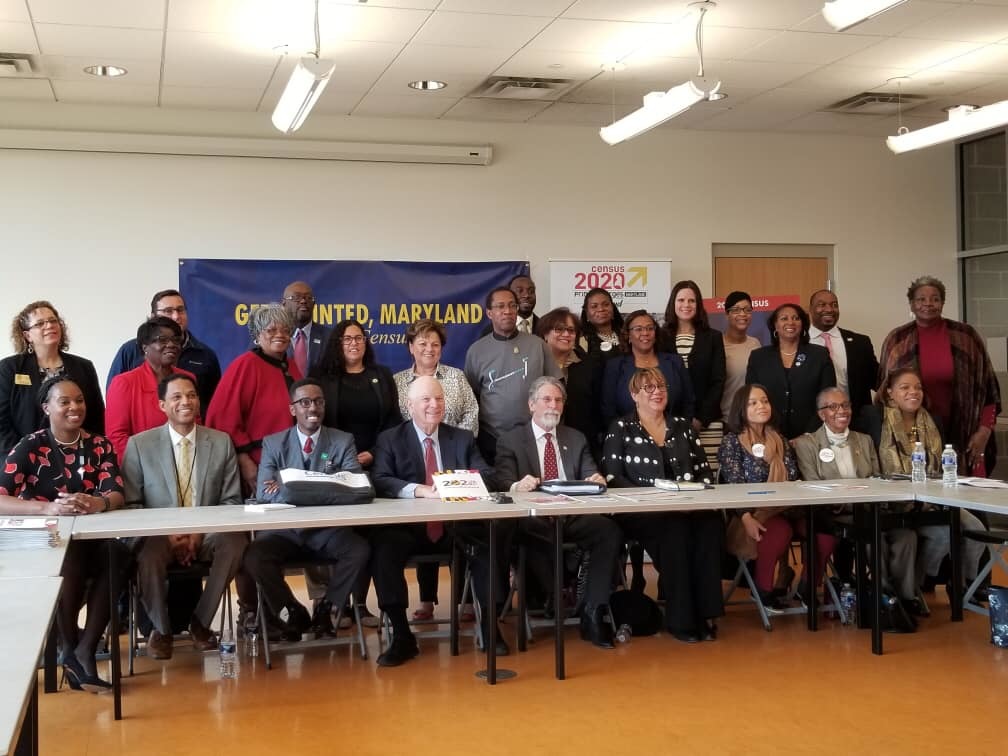 Back to Top
Secretary McCord Addresses Healthcare Groups About Census
Secretary McCord spoke at the Public Health Night reception in Annapolis hosted by the Maryland Public Health Association, Healthcare for All Coalition, and Green & Healthy Homes Initiative on February 26th. He stressed the importance of a complete and accurate 2020 Census count for the healthcare community.
Follow Maryland Census 2020 on Facebook
Back to Top
Planning Staff at AARP Define Your Decade Press Conference
Planning Executive Associate Maria Sofia joined Attorney General Brian Frosh, Councilman Tom Hucker, AARP Maryland State President Jim Campbell, members from the U.S. Census Bureau, and representatives form the Montgomery County Department of Aging for the Define Your Decade Press Conference in Montgomery County this morning. Maria spoke about Planning's efforts for the 2020 Census and stressed the importance of an accurate count.
Follow Maryland Census 2020 on Facebook
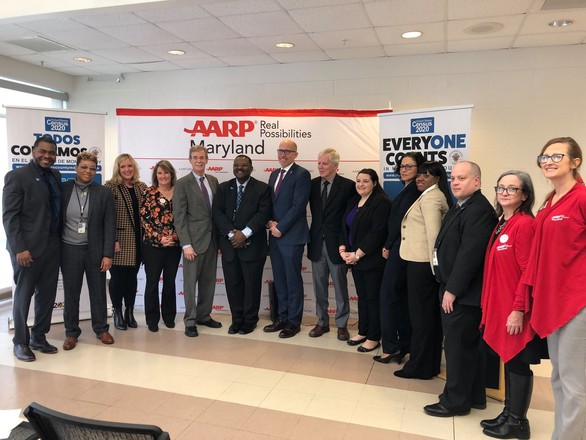 Back to Top
Maryland's Census 2020 Advertising Campaign to Launch on March 12
Following the U.S. Census Bureau's nationwide awareness media campaign, the state will launch its own campaign focused on Maryland communities. This media plan, with emphasis on the hard to count communities, will launch the week of March 12 and begins the motivation phase of outreach. This coordinated effort will include television and radio spots, billboards, bus signage, and social media.
 Back to Top
Census Bureau Plans to Reach Over 99% of Population
The U.S. Census Bureau has expanded its massive multimedia advertising campaign across the nation. The campaign is designed to reach over 99% of the nation’s 140 million households with messaging about the upcoming 2020 Census and the importance of responding. Invitations to respond will arrive March 12-20. Almost every person living in the United States will be reached an average of 40 times during the lifetime of the campaign, which will take place on television, radio, newspapers, online and at outdoor locations such as billboards and bus stops.
Read Full Article at the Cumberland Times-News
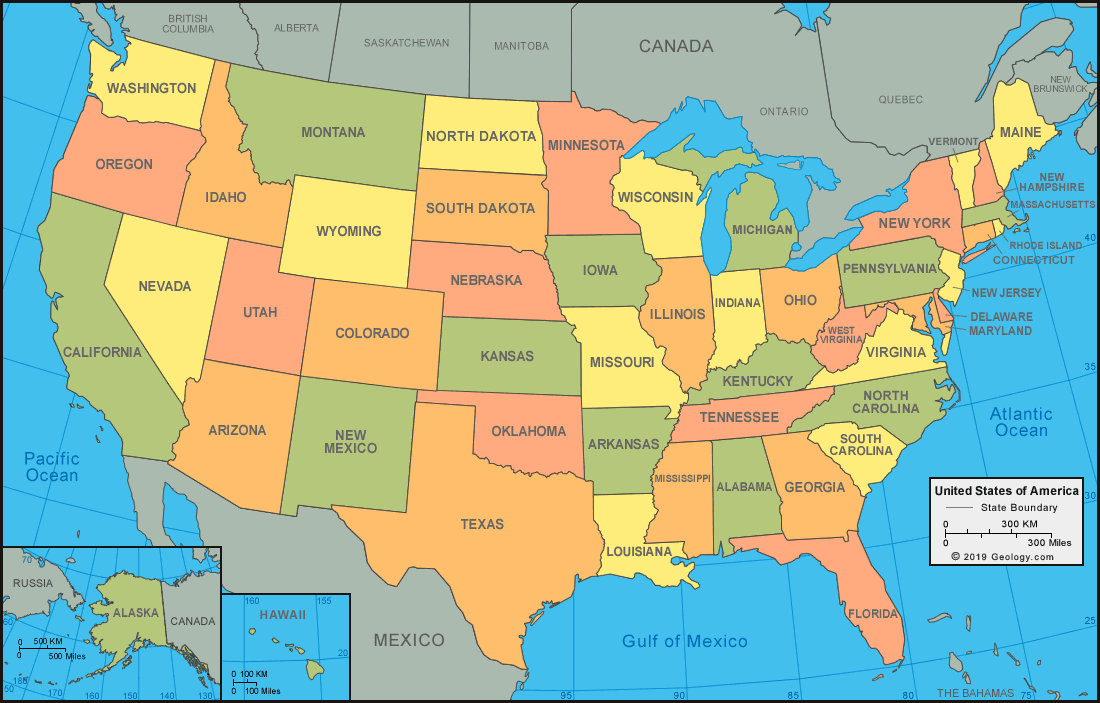 Back to Top
Census Bureau Profile America Facts for Features: Women s History Month: March 2020
The roots of National Women’s History Month go back to March 8, 1857, when women from various New York City factories staged a protest over working conditions. The first Women's Day celebration in the United States was also in New York City in 1909, but Congress did not establish National Women's History Week until 1981 to be commemorated annually the second week of March. In 1987, Congress expanded the week to a month. Every year since, Congress has passed a resolution for Women’s History Month, and the president has issued a proclamation.
Learn More Facts at U.S. Census Bureau
Back to Top
Census Bureau Reaches Ambitious 2020 Census Community Partner Goal
U.S. Census Bureau Director Dr. Steven Dillingham announced that the 2020 Census Community Partnership and Engagement Program (CPEP) has reached its goal of 300,000 partnering organizations nationwide. Community partners include government, community based organizations, local businesses, schools, faith-based institutions, and more. “The 2020 Census is a national asset and belongs to everyone across the country. We engage partners and supporters across the country to remind everyone that participating in the census is safe, easy, and important,” said Dr. Dillingham.
Read Full Release at the U.S. Census Bureau
Back to Top
Census Bureau Partners With Pediatricians and Child Advocates in Effort to Count Every Child in 2020 Census
The U.S. Census Bureau recently hosted an event to highlight efforts to ensure all young children are counted in the 2020 Census. Children under five years old are among population groups historically undercounted in the census. The Census Bureau is making a concerted effort to address this issue by creating community partnerships, educational programs, awareness campaigns, and operational innovations with the goal of raising awareness of the importance of counting young children.
Read Full Article at U.S. Census Bureau
 Back to Top
2020 Census Student Activities Mailed to Every School Across the Nation
The U.S. Census Bureau recently mailed 2020 Census Statistics in Schools (SIS) kits to every school in the nation. Mailed to every public, private, and charter school administrator, the kits include information for teachers to get access to free activities and materials to use in classrooms during the 2020 Census. The SIS kits include an administrator booklet which contains a printable flyer for teachers as well as a take-home flyer for students, information on how to access downloadable material on census.gov/schools, and large colorful wall maps for classrooms containing student friendly statistics.
Read Full Article on U.S. Census Bureau
 Back to Top
Census Training Tailored for the AAPI Community: Sunday March 1st
Howard County Chinese School has invited Christine Chen, the Executive Director of Asian and Pacific Islander American Vote (APIAVote), to give us a tailored census training on Sunday March 1 from 10:00 a.m. to12:00 p.m. at Howard Community College. She will not only cover messaging and best practices in conducting outreach to the AAPI community, but also go through the census form and provide scenarios to help volunteers understand how to answer questions they might get asked. All interested persons are encouraged to attend and bring their volunteers. Even if you have gone to other census training, you will find this one particularly practical, engaging and helpful.
RSVP at apia.vote/census-training
Back to Top
Majority of U.S. Adults Incorrectly Believe 2020 Census Will Ask About Citizenship, Survey Finds
And almost three-fourths aren’t sure responding online will be an option. With less than a month to go before most U.S. households receive 2020 Census questionnaires in the mail, the U.S. Census Bureau has its work cut out in spreading accurate information about the decennial operation.
Read Full Article at The Dallas Morning News
Back to Top
AP-NORC Poll: Most Americans Plan to Participate in Census
Most Americans say they are likely to participate in the 2020 Census, but some doubt that the U.S. Census Bureau will keep their personal information confidential, a new poll shows. The poll from The Associated Press-NORC Center for Public Affairs Research finds 7 in 10 Americans say it's extremely or very likely they will participate in the census this year by filling out a questionnaire. Another 2 in 10 say it's somewhat likely.
Read Full Article at the Associated Press
 Back to Top
The Changing Categories the U.S. Census Has Used to Measure Race
The varying ways in which the U.S. government has counted Americans over time offer a glimpse into the country’s past, from the days of slavery to recent waves of immigration. Racial categories, which have been included on every U.S. census since the first one in 1790, have changed from decade to decade, reflecting the politics and science of the times. It was not until 1960 that people could select their own race.
Read Full Article at Pew Research Center.
 Back to Top
Who is No. 1? Whoever Gets to Fill Out 2020 Census Form
It’s a question spouses, domestic partners and roommates are going to be forced to confront in the next few weeks as they fill out their 2020 Census forms: Who gets to be the primary person in the household? Everyone else who lives in the home has to be identified on the form by how they are related to so-called “Person 1.” It’s a question that even the most egalitarian homes are going to have to figure out — though it’s sure to spark some intriguing conversations.
Read Full Article at the Associated Press.
Back to Top
Wanted: Half a Million Workers to Help Count People for the Census
The U.S. Census Bureau is ramping up recruiting in a push to hire up to half a million temporary workers for this year's count. Census Director Steven Dillingham said this week that his agency is hoping hundreds of thousands more people will submit applications. So far, about 2.4 million have applied. "We would still like to get to 2.67 million (applications)," Dillingham told reporters Tuesday. "We're confident we'll do it, and we'll do it in short order."
Read Full Article at CNN
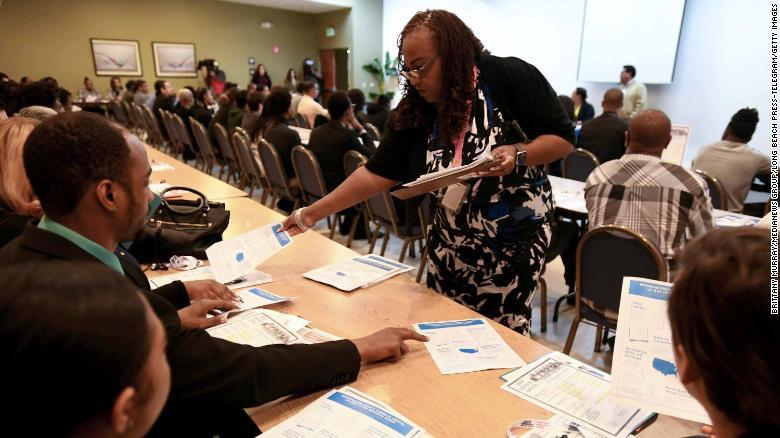 Back to Top
Community Groups Raise Awareness for 2020 U.S. Census
In Easton, members of the community are pushing efforts to make sure everyone gets counted in the 2020 Census. Members of the Chesapeake Multicultural Resource Center have been selected to provide space for people across Talbot County to get information on the census. They say increasing awareness about the census is critical for people of all backgrounds.
Read Full Article at WMDT TV 47
 Back to Top
A Full 2020 Census Count of Military Service Members and Families Is Important to Their Communities
For cities and states across the country, active duty military, veterans and their families are an important part of community life — whether they live on base, in nearby towns or are deployed or stationed overseas. But military families may not realize just how important they are when it comes to the 2020 Census. They should know that the 2020 Census will have an impact on their communities’ political representation and billions of dollars in funding annually for the next 10 years.
Read Full Article at the U.S. Census Bureau
Back to Top
College Towns Depend on Accurate Count of Students Living in Area
A freshman living on campus in student housing. A junior varsity athlete sharing an off-campus house with teammates. A senior living solo in an off-campus apartment. Even though many residents of a typical American college town might move away after they graduate, they have to be counted while they live there. College towns across the country depend on students’ responses to the census. The reason: Census results help determine how much federal funding communities will receive over the next 10 years.
Read Full Article at the U.S. Census Bureau
 Back to Top
Funding for Nutrition Benefits Programs Informed by Census Statistics
We all know fresh fruits and vegetables are key to good health. Yet many low-income neighborhoods have limited access to fresh produce. That’s why programs such as the federally funded Supplemental Nutrition Assistance Program (SNAP) and the National School Lunch Program are vital to the health of communities. Knowing how many children are in an area helps federal, state and local officials evaluate funding for nutrition programs.
Read Full Article at the U.S. Census Bureau
Back to Top
The Census Goes Digital – 3 Things to Know
Collecting census data online creates new risks to the accuracy and integrity of the information. Here's what you need to know. The U.S. Census Bureau is hoping that most people who live in the U.S. will use the internet to answer census questions, rather than filling out a paper form or providing those answers to a census taker in person, at their home. That would be cheaper – a plus for a budget-strapped Census Bureau – and could help ensure maximum turnout and accuracy of the count. For instance, databases could keep track of which homes have not yet responded to the survey, allowing census officials to target mailings and in-person visits to those locations, without needing to spend time chasing households that have already responded.
Read Full Article at GOVERNING Magazine
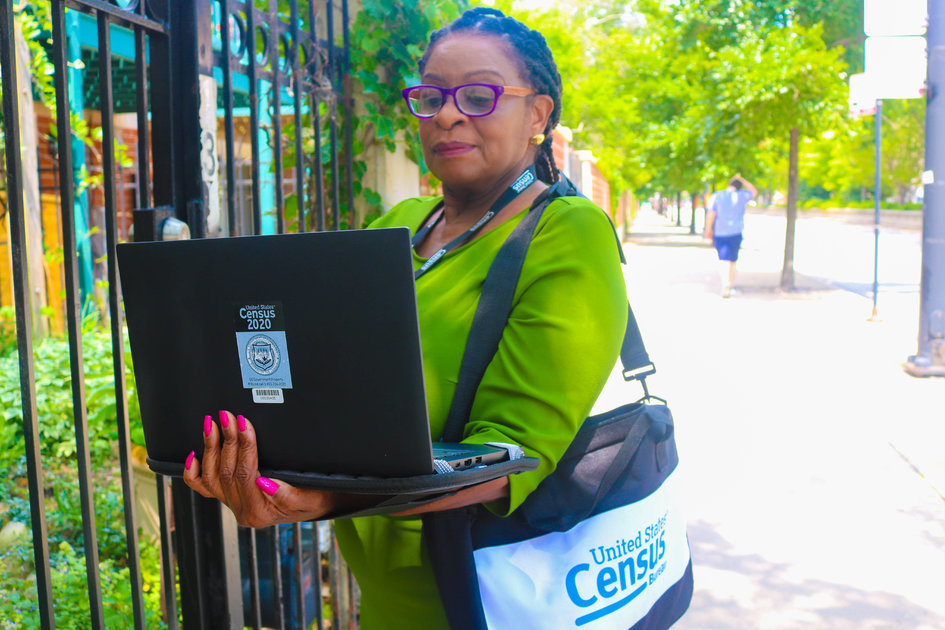 Back to Top
|